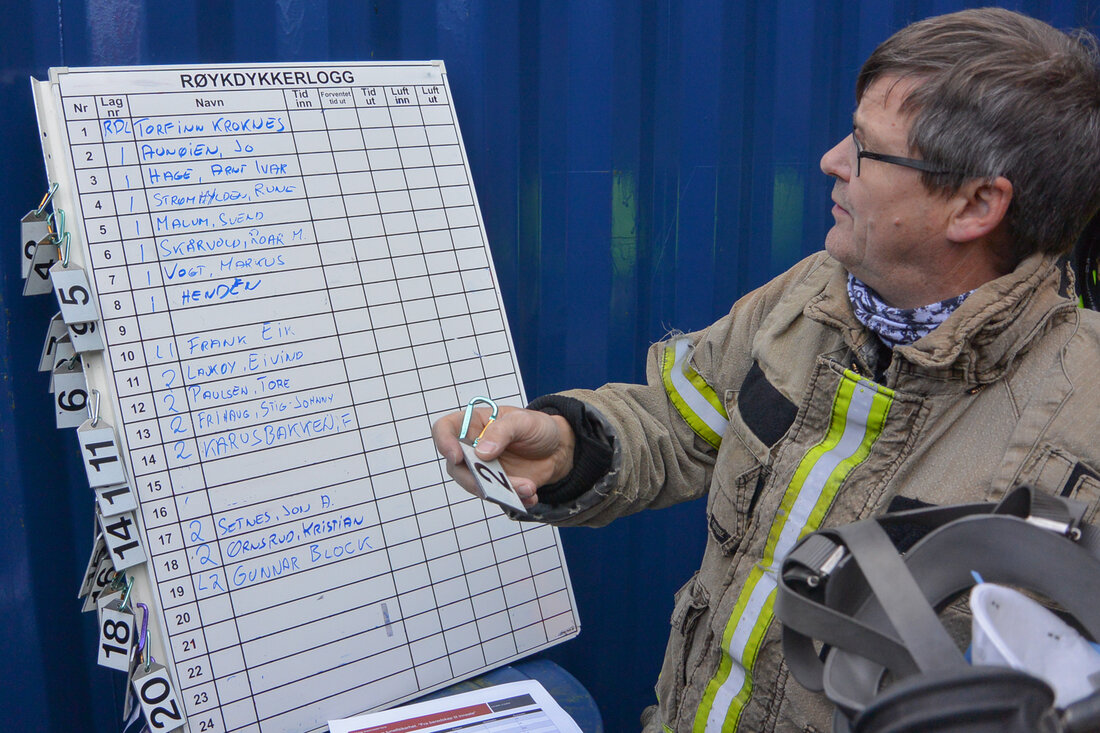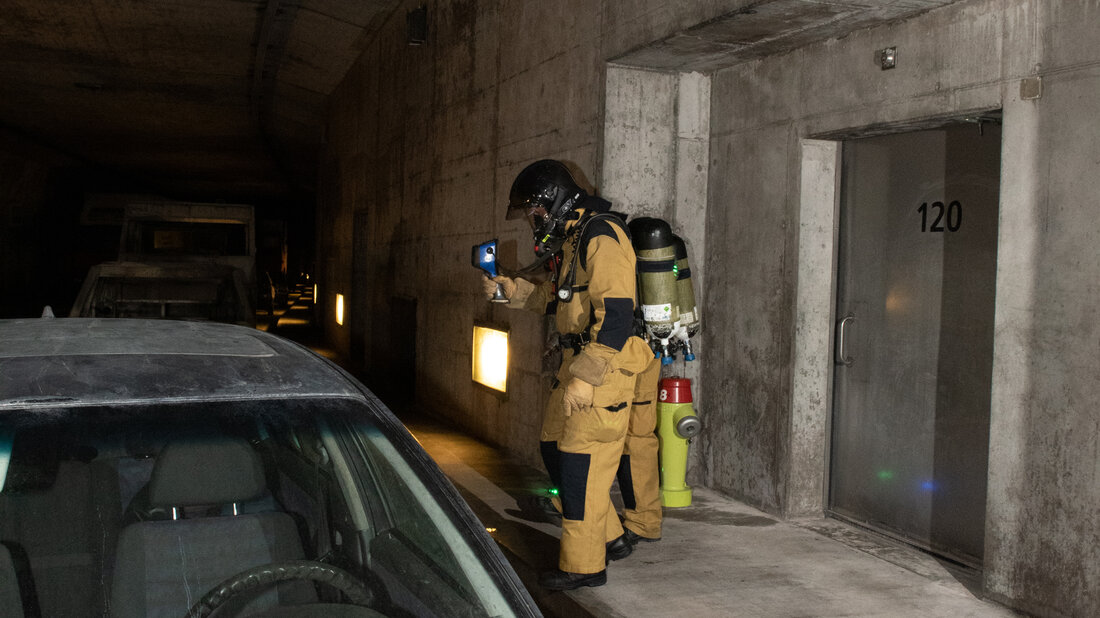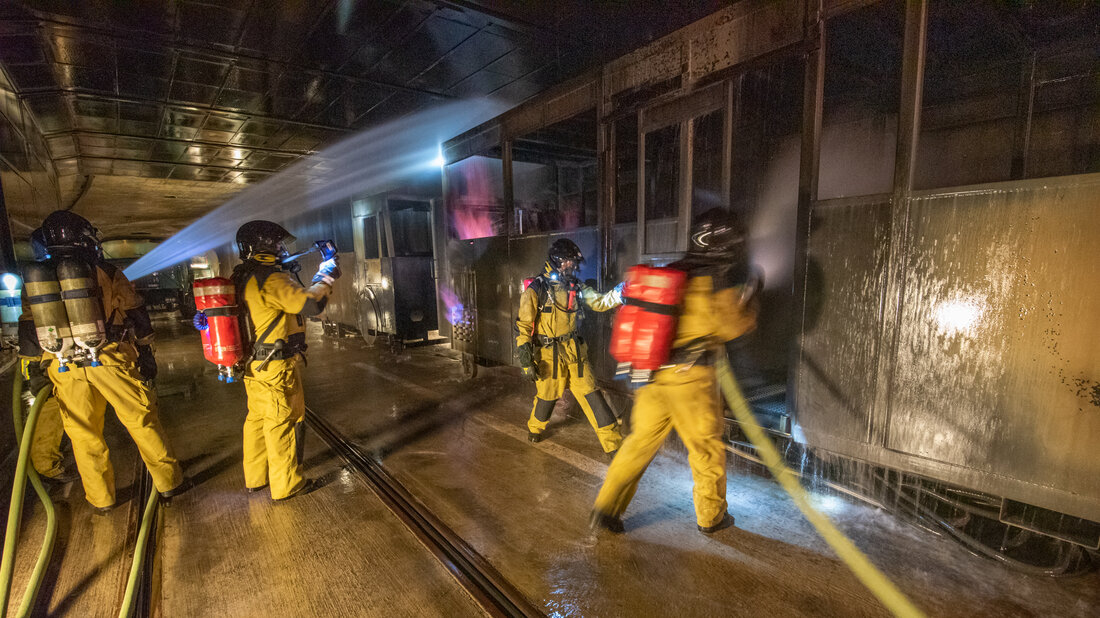How much personnel is required for firefighting operations in a road or rail tunnel? This question cannot be answered in general. Therefore, in this article, we provide some information for the facility- and site-specific personnel requirements planning.
The personnel requirements result from the tasks
For firefighting operations in traffic tunnels, it has proven to be useful to distinguish between the core tasks of «reconnaissance», «firefighting» and «search & rescue». In addition, there are the tasks of commanding the incident as well as the support functions typical for firefighting operations, such as monitoring the use of respiratory protection equipment or the water supply over long distances.
Personnel requirements for the reconnaissance team
For explorations outside the danger zone, for example, outdoors in front of an emergency exit, one firefighter may suffice. At least two firefighters must be deployed in areas that are filled or can fill in future with smoke. The firefighters should reconnoitre the situation from the perspective of the incident command. Therefore, at least the head of the reconnaissance team should be an experienced firefighter, who ideally also has extensive knowledge of the tunnel system.
Personnel requirements for the firefighting team
There are no statistical studies on how many firefighters are deployed by fire services on average to extinguish vehicle fires in tunnels. The International Fire Academy recommends the deployment of teams of five for firefighting. Thereby a line is advanced by two firefighters. They are coordinated by the team leader, who also communicates with the section or incident command and monitors the effectiveness of the measures using a thermal imaging camera.
Personnel requirements for the search & rescue team
The search tactics determine the personnel requirements for the search & rescue team: In a two-lane road tunnel, two firefighters search the vehicles on one lane. To search passenger coaches in train tunnels, two firefighters are deployed to the right, the left and within the train, making a total of six. In the case of double-decker carriages, two additional firefighters may be required for the upper carriage deck. The coordination is carried out by the team leader.
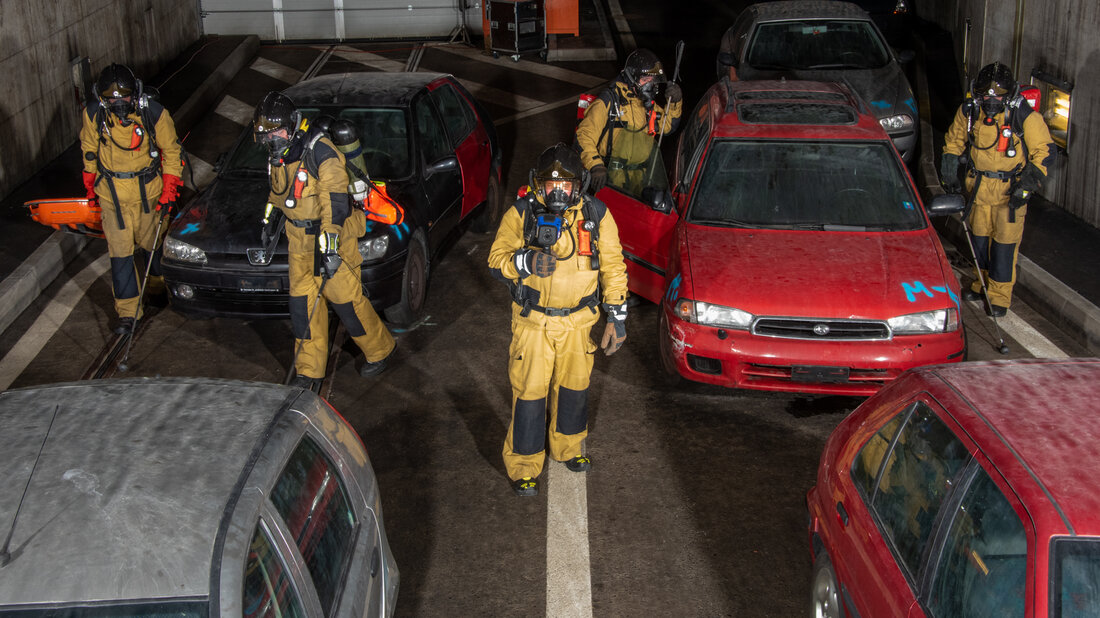
Teams must be able to be deployed in a multifunctional manner
If, for example, personnel is assigned as a firefighting team, this does not mean that they serve the entire deployment exclusively in this one function. Regardless of the initial assignment, the incident command must be able to assign and reassign each team for each task.
The number of teams depends on the situation
How many reconnaissance, firefighting and rescue teams are needed in an actual operation depends on many factors. A rough rule of thumb is: If the tunnel has efficient water supply, relatively few personnel is required for the actual firefighting. Search & rescue may require dozens of teams for long tunnels that can fill with smoke. In the following, criteria for the need for teams in road tunnels are presented, followed by information on the situation for firefighting operations in railway tunnels.
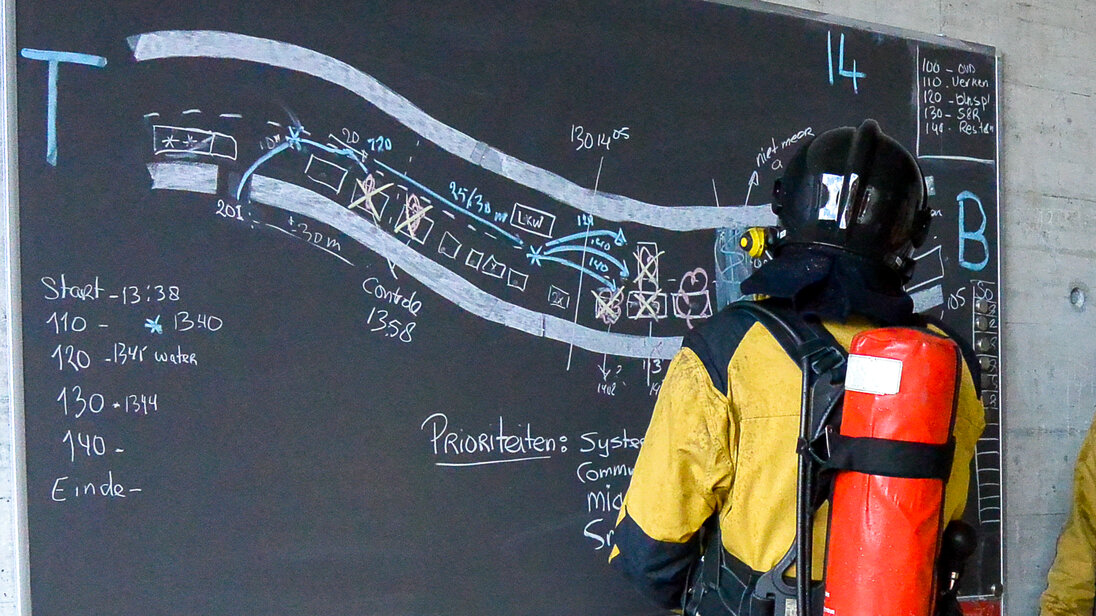
Demand for reconnaissance teams
The need for reconnaissance teams is derived from the information to be procured for both railway and road tunnels, which can be distinguished into facility-specific and incident-specific information.
Facility-specific information includes, for example, tunnel length, number and arrangement of tubes, lanes, tracks, emergency exits, ventilation type, safety installations, etc. The more such information has already been collected and documented during operation planning, the less needs to be reconnoitred in the case of deployment.
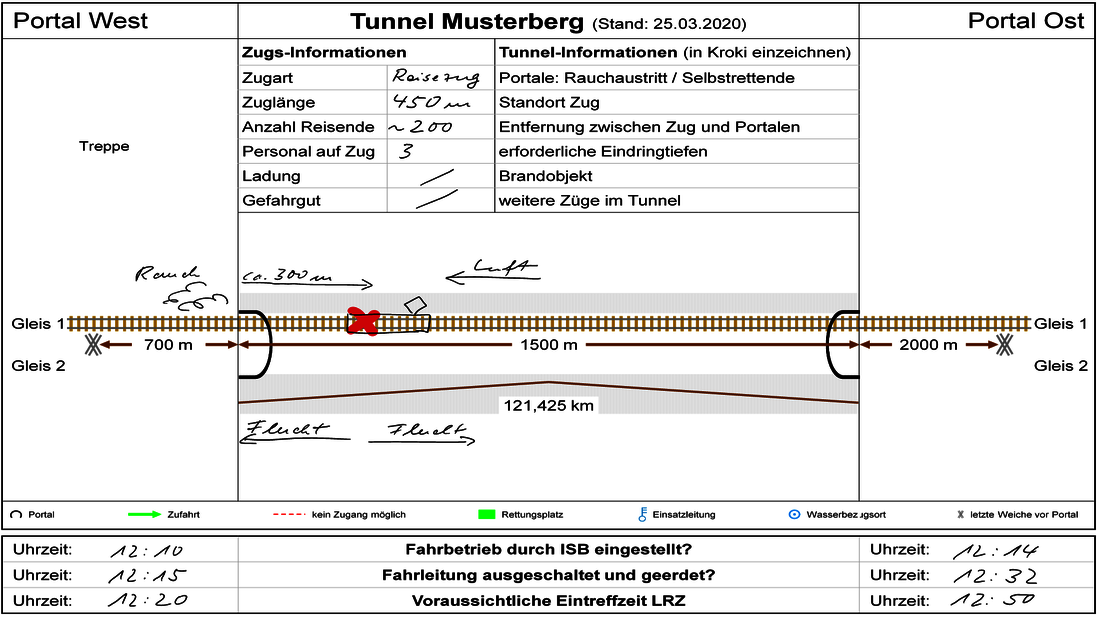
Incident-specific information is, for example, what exactly where, in which direction the smoke moves, how many people are affected, how the facility users behave and whether HAZMAT is involved. In order to obtain this information, the more reconnaissance teams are required, the more complex the tunnel system and the incident are. Direct access to surveillance cameras and video recordings of the incident sequence can significantly reduce the personnel resources required.
Demand for firefighting teams
Judging by the feedback received from fire services by the International Fire Academy, a five-person firefighting team is sufficient to achieve rapid firefighting success, even in the case of major vehicle fires. In the initial deployment phase, however, it is often not evident from which portal side the location of the fire can be reached the fastest. For this reason, the International Fire Academy recommends in general for all fire incidents in tunnels to advance at least with one firefighting team from each portal (two-sided attack). The team that reaches the fire first will then extinguish it. The second team can be used as a safety team, for example, or support the first team in case of more massive fires.
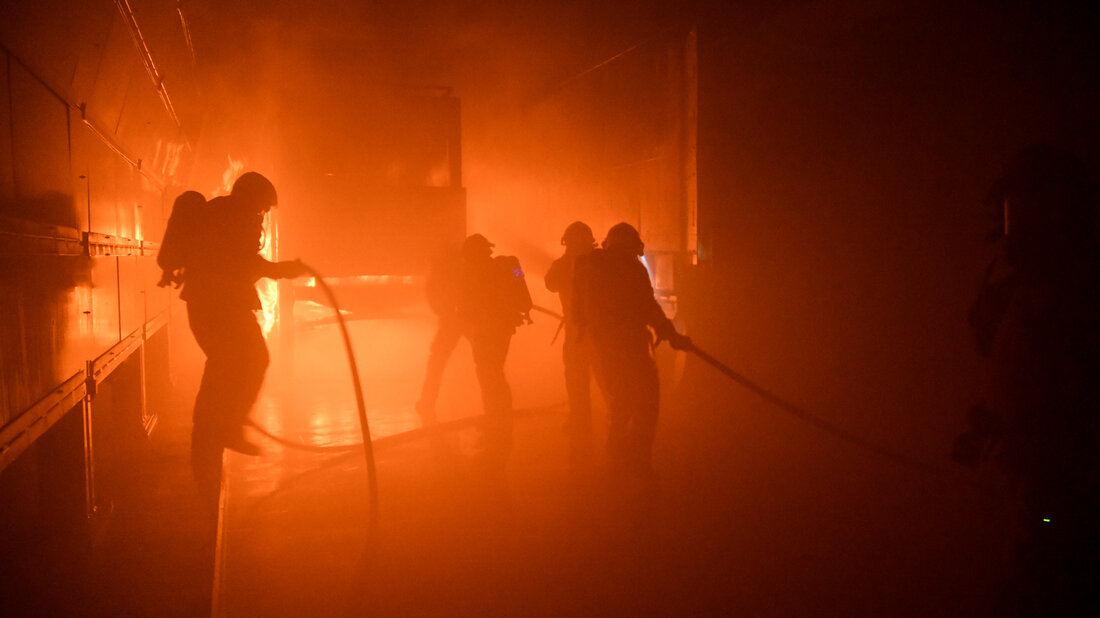
Demand for search & rescue teams in road tunnels
In road tunnels, the demand for search & rescue teams is primarily due to the number of sections that may be filled with smoked, whereby «section» refers to the area of a tunnel tube between two emergency exits. In road tunnels, according to the current European standard, these sections are a maximum of 500 m long; this corresponds to the distance that SCBA wearers with two-bottle devices, in general, can usually just cope with. In some road tunnels, the distance between emergency exits is around 100 m. Here we have to consider whether a single team should be deployed for each section; single-bottle SCBAs then would then be sufficient for these distances. Or whether a team should search two or three sections with a two-bottle SCBA.
How many sections of a road tunnel can be filled with smoke depends mainly on the type of ventilation in the event of a fire. If the smoke is extracted on both sides of the fire, the smoke is limited to a few sections. With longitudinal ventilation, the smoke in the driving area is pushed to the portal, which in the worst case can lead to smoke in the entire tube. In this case, you will want to deploy as many teams as sections have been filled with smoke.
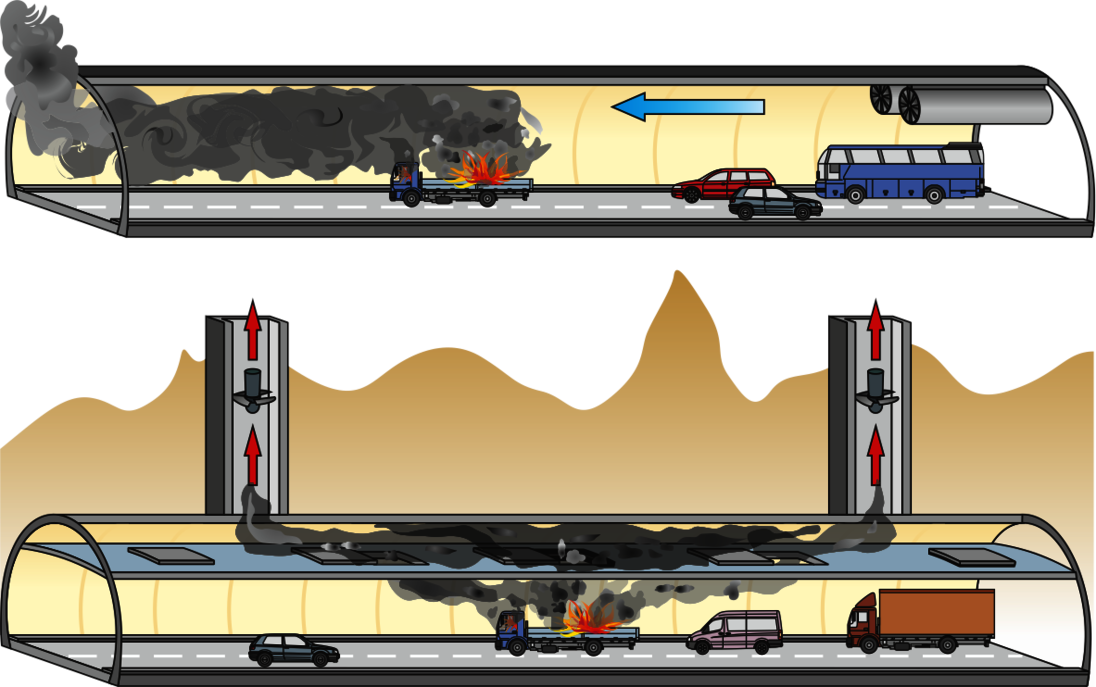
Demand for search & rescue teams in railway tunnels
For railway tunnels, it is challenging to assess the personnel demands. Firstly, luckily, there are hardly any empirical values that can be used as a guide. For example, it is unknown how long it takes to search a 400 m long train under operating conditions. Secondly, railway tunnels are very different. For example, there are many tunnels, several kilometres long, that have no emergency exits other than the portals. In the case of newly constructed tunnels, the distances between the emergency exits are usually 500 m. Thirdly, the personnel requirements also depend on whether firefighting and rescue trains or road-rail vehicles are available. At least for older rail tunnels, a detailed analysis of the individual case is, therefore, necessary to estimate the personnel demand.
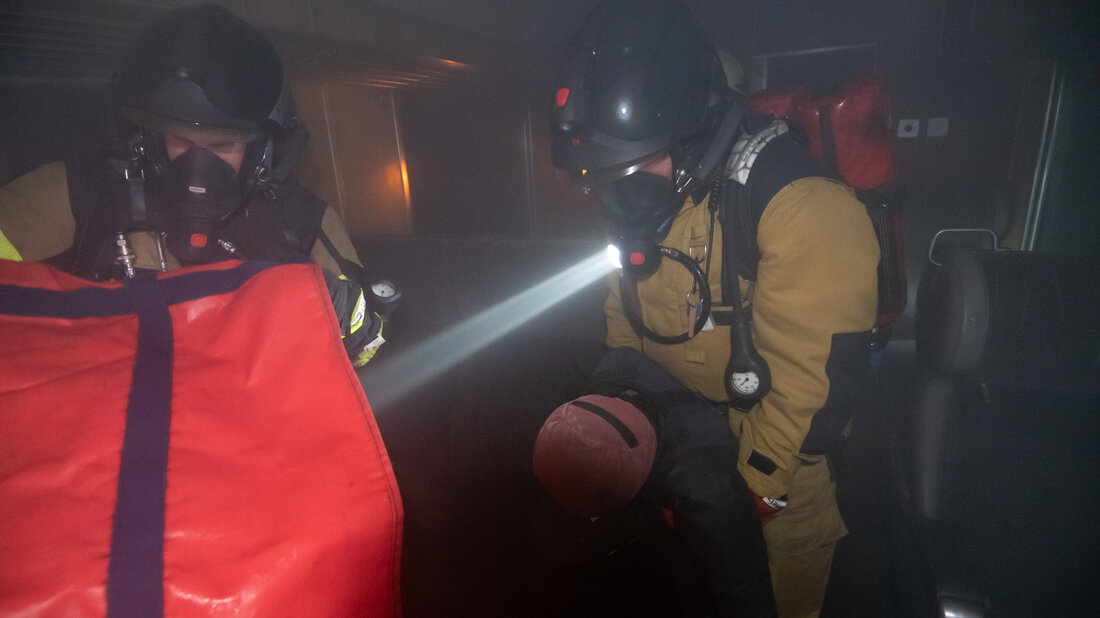
Critical factor: approach time
One of the most critical parameters for the actual personnel demand is the approach time of the first deployed units. The diagram below shows the typical temperature profile of fires. After the ignition, the fire initially develops slowly until it suddenly, with a flashover, grows to a full fire. The development phase takes about ten minutes in the case of vehicle fires.
With the fire temperature, the amount of smoke generated per unit of time also increases. This means: The sooner the fire is extinguished, the quicker the tunnel can be cleared of smoke, the less time people are exposed to the fire gases, the quicker search and rescue can take place, and the lower the total number of personal injuries to be expected.
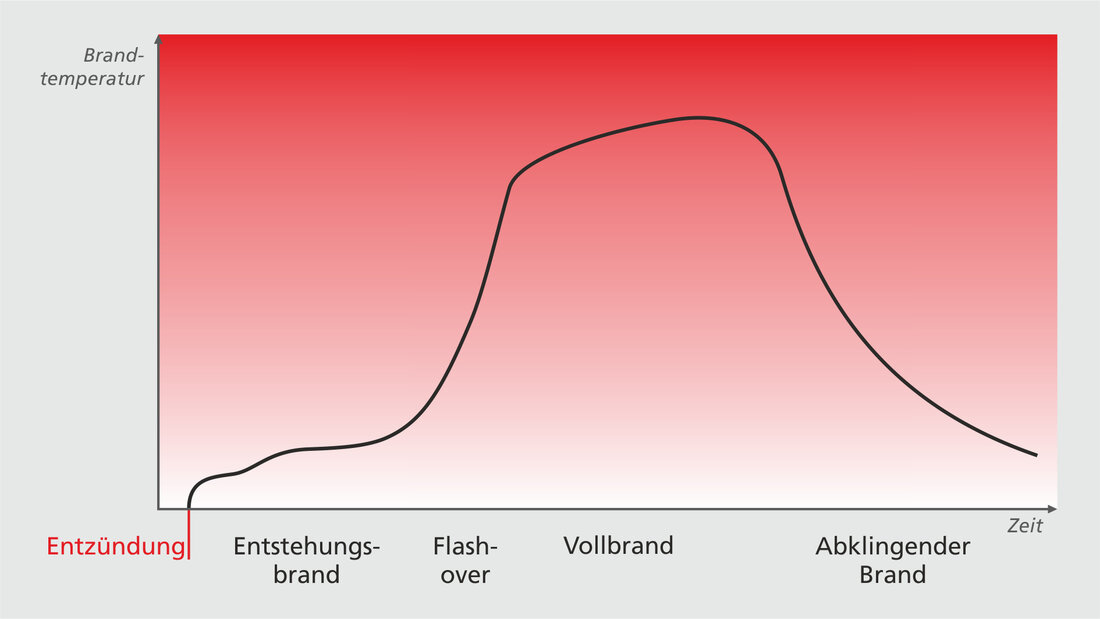
For the need for personnel, this means: If a vehicle fire is extinguished within a few minutes after the ignition, the personnel required for search & rescue is considerably lower than in the case of a long-lasting full fire. This may seem trivial, but it has three far-reaching consequences:
- The faster the fire is detected, and the fire service is alerted, the greater the chance of limiting personal injury. Therefore, this process should be designed as optimally as possible. In particular, it should be ensured that the fire service's alarm centre is noticed without any delay as soon as there is even the slightest suspicion of a fire. More and more tunnel fire services are now called out for all accidents in «their» tunnel, even though there are still no signs of fire development. Some fire services also secure the recovery of broken-down vehicles through breakdown services with a fire truck.
- If tunnel fire services are stationed directly at the portal, such as the Emergency Service Gotthard at the Gotthard road tunnel, the damage can be effectively limited even with a few firefighters.
- On the other hand, if a tunnel fire service needs more than approximately ten minutes from the detection of the fire to the arrival at the scene of the fire in the tunnel, it should always be assumed in the requirements planning, that full vehicle fires will occur and that with longitudinal ventilation the whole of the affected tube may be completely filled with smoke.
Conclusion and example calculation
Let us take as an example a 900 m long single-tube road tunnel with longitudinal ventilation and – excluding the portals – two emergency exits. Then, in the worst case, three sections of 300 m are to be searched. The minimum requirement could then be calculated as follows:
- three reconnaissance teams, each with two firefighters,
- two fire teams with five firefighters each,
- three search & rescue teams with five firefighters each,
- plus all support functions resulting from regulations (service regulations), the respective command structure and vehicle operators, e.g. incident commander, engineer, safety team, etc.
The International Fire Academy recommends simulating this immense initial deployment as a tabletop scenario – also in order to be able to recognise which personnel requirements cannot be safely met in the initial phase. As a result, some fire services, for example, forgo the use of reconnaissance teams due to staff shortages, even if this is suboptimal.
In the case of large and complex tunnel systems, for which several fire services have to be deployed together from the start, it is advisable to hold workshops for joint operational planning, for which the International Fire Academy can counsel organisation and the implementation.


![[Translate to English:] [Translate to English:]](/fileadmin/_processed_/2/2/csm_ifa_MAG_098_Instruktoren-UVA_29_158824ebb9.webp)
